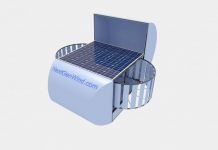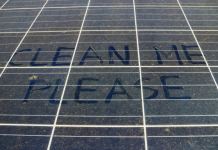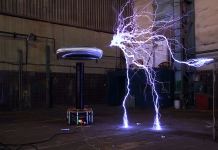The selective coating we can say the main element in solar cells. The essence of this coating is to attract the greatest number of sunlight, and then convert it into thermal energy with subsequent storage and transportation. The coating emits very little heat, while it absorbs much of his work can be compared with the thermal diode. Each selective coating has certain properties, so are suitable for a specific surface. For example, a coating for a copper surface not suitable for application to aluminium.
Good selective coatings have a coefficient of selectivity (the ratio of absorbed to reflected energy) 8,5-16. The correct choice of coating significantly reduces the cost of additional hardware. This coating increases the efficiency of solar cells.
As selective coatings can be used the following substances:
1. Prepared chemical, which is sold in specialized points of sale;
2. Copper oxide;
3. A variety of metal oxides;
4. Black chrome;
5. Thin specialized material for insulation;
6. Selective paint for solar panels;
7. The coating effect of anticonvection. The peculiarity of it is that it greatly reduces the heat transfer. Before application the surface has to be prepared, remove all the rough edges and carefully polished. The prepared surface should reflect light, and after such surface preparation, the coating will work as efficiently as possible.
8. The simplest form of selective coating is a matte black paint or plain black. However, the effectiveness of such coatings is very low.
Selective coating is applied on the surface in four different ways:
• Surface coating by chemical means. The coating applied by this method is long-lasting and durable, is resistant to mechanical, physical and chemical effects. The coating has good protective properties.
• Magnetron-ion sputtering. This technique allows the sprayed coating in many layers. For the implementation of the deposition by this method you need to have a magnetic system, the anode and the target cathode. During the electron-ion emission electrons are formed, they move in a magnetic field directly to the target.
• Deposition electrochemically, gives the opportunity to obtain a very thin coating, the thickness of which varies from hundredths of a micrometer to tenths of a millimeter. The method uses two types of electrolytes. The most common acidic and alkaline cyanide electrolytes.
• Plasma spraying. The coating produced using plasma jets. The essence of the method lies in the fact that the spraying material is fed to the plasma jet. Under high temperature it can melt and flow is directed to the surface. Under the action of pressure of the flow of sprayed substance interacts with the surface, thereby forming a sprayed layer.
Modern solar panels are covered by a highly selective coatings, except that they are very effective they are also reliable and high-tech.























